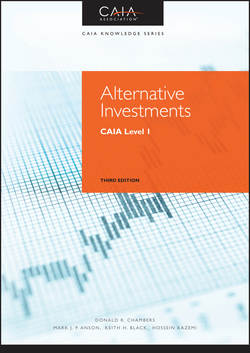Читать книгу Alternative Investments - Hossein Kazemi - Страница 57
На сайте Литреса книга снята с продажи.
PART One
Introduction to Alternative Investments
CHAPTER 3
Quantitative Foundations
3.5 Distribution of Cash Waterfall
3.5.8 Incentive Fee as an Option
ОглавлениеIncentive fees are long call options to GPs, who receive the classic payout of a call option: If the assets of the fund rise, they receive an increasing payout, and if the assets of the fund remain constant or fall, they receive no incentive fee. The underlying asset is the fund's net asset value, and the time to expiration of the option is the time until the next incentive fee is calculated, at which time a new option is written for the next incentive fee. In the absence of a hurdle rate, the strike price of the call option is the net asset value of the fund at the start of the period or the end of the last period in which an incentive fee was paid, whichever is greater. The GPs pay for this call option by providing their management expertise.
A hurdle rate may be viewed as increasing the strike price of the incentive fee call option. A hurdle rate increases the amount by which the net asset value of the fund must rise before the fund manager receives an incentive fee. The higher the hurdle rate, the lower the value of the call option.
As a call option, incentive fees provide fund managers with a strong incentive to generate profits. The call option moves in-the-money when the net asset value of a fund rises to the point of providing a return in excess of any hurdle rate. The call option moves out-of-the-money when the net asset value of the fund falls below the point of providing a return in excess of any hurdle rate.
When the option is below or near its strike price, the incentive fees provide the fund manager with an incentive to increase the risk of the fund's assets. The effect of increased risk is to increase the value of the call option. If the risks generate profits, the fund manager can benefit through high incentive fees. If the risks generate losses, the effect on the fund manager is limited to receiving no incentive fee, ignoring clawbacks.
When the incentive fee call option is deep-in-the-money, the fund manager benefits less from an increase in the risk of the underlying assets. The consequences of net asset value changes to the fund manager are more symmetrical when the option is deep-in-the-money, meaning when large incentive fees are likely. Risk aversion may motivate the fund manager to lessen the risk of the underlying assets when the incentive fee option is deep-in-the-money.
It can be argued that the multifaceted incentives generated by the optionlike character of incentive fees are perverse. The LPs prefer fund managers to take risks based on market opportunities and the risk-return preferences of the LPs. However, incentive fees can motivate fund managers to base investment decisions on the resulting risks to their personal finances. In summary, incentive fees can cause decisions involving risk to be based on the degree to which an option is in-the-money, near-the-money, or out-of-the-money.
